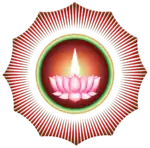History of Ayyavazhi
The History of Ayyavazhi traces the religious history of Ayyavazhi, a belief-system originated in the mid-19th century in Southern India. Ayyavazhi came to be noticed by the large number of people gathering to worship Ayya Vaikundar in the middle of the 19th century. The majority of the followers of Ayyavazhi were from marginalised and poor sections of society.[1]
| Part of the series on |
| Ayyavazhi |
|---|
 |
|
Right from the beginning of its development Ayyavazhi was seen in competition by the Christian missionaries on their mission. This is evident by the reports on Ayyavazhi presented by the Christian missionaries.[2] Although the majority of the followers of Ayyavazhi were from the Chanar caste (a social group), people of other castes also crowded around Vaikundar.[3] It was not usual at the time for people of different castes to intermingle.[4]
Early years
By the middle of the 19th century, Ayyavazhi had come to be a recognisable religion, in South Travancore and South Tirunelveli.[5] The growth of the religion increased significantly from the 1940s through the decades.[6] Almost a century after Akilam was written down, it was released in printed form for the first time in 1933. The first printed form of Arul Nool came in 1927. While some others view that it released first in 1918. And then onwards Ayyavazhi is spread on the base of the teachings of Akilam rather than by oral tradition, which was active until then. Ayyavazhi's fast growth in its first century of existence was noted by Christian missionary reports of the mid-19th century.[7] As per the reports from the headquarters, from the period of Indian Independence Ayyavazhi spreads quickly and furthermore from the 1990s.
Seedars and Thuvayal Pandarams
When Ayya was alive he instructed the five Seedars with the rules and regulations.[8] They were asked to preach them to the people. After he attained vaikundam, the disciples went to different parts of the country, preaching them to the people.[9]
The participants of Thuvayal Thavasu who were called Thuvayal Pandarams were the primary missionaries of Ayyavazhi who went to different parts of the country carrying the Gospels of Vaikundar. Also their descendants too do so.
Payyans
According to some oral traditions Vaikundar called the son of Thirumalammal affectionately as Payyan (little boy). Payyan was allowed to perform the panivedai to Ayya whenever the Citar were away. He was allowed to offer the Nithiya Pal to Ayya along with Seedars. And after the period of Ayya, Seedars started administrating the Swamithoppe Pathi. After the period of Seedars, the Payyan family members started administrating the temple, in spite of the disputes with Vellaicchamiyar who claimed for the administration in the court, but the judgement was in favour of Payyan family members. Other Pathis came under the administration of the native followers of Ayya of that places.[10] The Swamithoppe Pathi, administration was continued by Payyan family descendants. The panividiyalar was called as "Dharmaghartta".
Dharmaghartta's so far were,[11]
- Dharmaghartta. Podukkutty
- Dharmaghartta. Krishna Narayana Vadivu
- Dharmaghartta. Chella vadivu
- Dharmaghartta. Bala Krishnan
- Dharmaghartta. Chella Raj
- Dharmaghartta. Bala Prajapathi Adikalar
Though the eldest of the Payyans now is Anantha kutty Nadar, due to unknown reasons he refused to accept the rank.[12] So the next elder most, Bala Prajapathi Adikalar is considered as the present Dharmaghartta.[13]
Nizhal Thangals
The Nizhal Thangals are the worship centers of Ayyavazhi built by devout followers of Ayya. Some of them are believed to be built when Ayya was alive. Eachenvilai Nizhal Thangals is Thalamai Nizhal Thangals (Like Thalamai Pathi Swamithoppe). Eachenvilai Thalamai Nizhal Thangals was the first one established and there is a Kai Vizhaku (lamp) lighted by Ayya himself in this temple. Many of the Nizhal Thangals were not under the rules of Ayyavazhi scriptures. Hundreds of Thangals arose in different parts of the country. Some were run by single individuals and some other by Ayyavazhi organisations and independent trusts.[14] But all were bonded under Swamithoppe only religiously by not officially. This rate of rise of Thangals even increased after the 1970s.
After Indian Independence

The growth of Ayyavazhi after the independence of India is significant especially in the northern districts of Tamil Nadu.[15] Nizhal Thangals rose in hundreds throughout the state.[16] Around the 1940s, the Lotus with Namam was announced as the Symbol of Ayyavazhi. Many Ayyavazhi based social welfare movements raised in the late 20th century. Alternative to the commonly accepted Palaramachandran version, many other versions of Akilam were released during the late 20th century including some controversial versions. 27 years after the release of Palaramachandran Version, the most controversial Sentratisai Ventraperumal version of Akilam was released in 1966, while Vaikundar Thirukkudumbam Version was released in 1989.
Fast Spread
Bala Prajapathi Adikalar, the present Dharmaghartta of Swamithoppe Pathi had a significant role in the later day developments of Ayyavazhi. He has been awarded communal harmony award in the year 2003.[17] From 1975 the Masi Procession (The Vaikunda Avatara Orvalam also called as Vaikunda Jayanthi Orvalam) was held and today it was one among the largest religious processions in Tamil Nadu. People from almost all the districts of Tamil Nadu and from some parts of Kerala, Andhra Pradesh, Karnataka, and Maharashtra participate in this procession. A few years later the Thiruvananthapuram procession and the Thiruchendur Procession were also held. From 1994 onwards The Vaikunda Avataram was declared as a holiday for the district of Kanyakumari. From the year 2006 Ayya Vaikunda Avataram was declared as a Holiday for the districts of Tirunelveli and Tuticorin.[18]
Also Ayyavazhi and its leaders played an important role in resolving the religious tensions during the Mondaicaud dispute. In 1993 a democratic body, Anbukkodimakkal Thirucchabai was formed by the headquarters to organise Ayyavazhi and its followers. Currently, Bala Prajapathi Adikalar, one of descendant of Payyan dynasty and G N Siva Chandran, one of the primary singer of ayyavazhi are considered to be the leaders of Ayyavazhi,[19] though some organisations oppose their lead. They had laid foundations for a large number of Nizhal Thangals throughout South India.[20]
Ayyavazhi conferences
Many conferences have been organized across the country. The first conference was held at Marthandam for three days on a date that is unknown.[21] Later, conducted at Valliyoor, Chennai, Arumuganeri, Nagercoil, Thiruvananthapuram and almost at all the taluk headquarters of Kanyakumari District. The Payyans as well as experts deliver lectures on the tenets of Ayyavazhi at the conferences. Thiru Edu-Vasippu is also conducted.[22]
References
- G.Patrick's, Religion and Subaltern Agency, Chapter 5, page 90
- The LMS Reports itself were gathered in the article headed Ayyavazhi in reports by Christian missionaries
- Ailattirattu Ammanai, published by T.Palaramachandran Nadar, 9th impression, 1989, Page 251:Akilam speaks of 18 castes's gathering around Vaikundar.
- G.Patrick's, Religion and Subaltern Agency, Chapter 2, South Tiruvitankur
- G.Patrick's, Religion and Subaltern Agency, Chapter 5, The Religious Phenomenon of Ayyavazhi, page 91 Sub-heading:Spread of the Phenomenon, line 1
- G.Patrick's, Religion and Subaltern Agency, Chapter 5,page 92
- See the LMS Reports gathered in the article Ayyavazhi in reports by Christian missionaries from the book Religion and Subaltern Agency.
- G.Patrick's, Religion and Subaltern Agency, Chapter 5,
- G.Patrick's, Religion and Subaltern Agency, Chapter 5, page 120
- N.Elango and Vijaya Shanthi Elango Ayya Vaikuntar - The Light of the World, 1997, Chapter 8, Pancha Pathis, pages 41-43
- N.Elango and Vijaya Shanthi Elango, Ayya Vaikuntar - The Light of the World, Chapter 4, The Gurukulam, (The Payyan dynasty is mentioned here as Gurukulam) pages 21
- N.Elango and Vijaya Shanthi Elango, Ayya Vaikuntar - The Light of the World, Chapter 4, The Gurukulam, (The Payyan dynasty is mentioned here as Gurukulam) pages 21
- In Swamithoppe Pathi, usually the Pattathu Ayyas use to lead other Panividaiyalars and use to carry the holy Pirambu and other things believed to be used by Ayya during the holy procession etc. Presently the "Pattathu Ayya" Anathakutty Nadar does not, and this was practiced by Bala Prajapathi Adikalar.
- P.Sarvesvaran, Sri Vaikunda Swamikal - A Forgotten Social Reformer, page2-3
- P.Sarvesvaran, Sri Vaikunda Swamikal - A Forgotten Social Reformer, page 2-3 : Here the author told about the spread of Ayyavazhi to other parts of Tamil Nadu, which means north to Kanyakumari.
- C. Poulose, Advaita Philosophy of Brahmasri Chattamoi Swamikal, Chapter 2, page 24
- The Hindu Report - The communal harmony award of the Tamil Nadu Government for the year 2003 was presented to Bala Prajapathi Adigalar of Kanyakumari district.
- See the report on the news paper The Hindu- The report on declaration Archived 27 July 2011 at the Wayback Machine
- N. Elango & Vijaya Shanthi Elango 1997 Ayya Vaikuntar - The Light of the World Chapter 4, Page 21-22 "The Gurus are Payyan Chella Raj, Bala Prajapathi, Bala Janathipathi, Balalokathipathi, Payyan Sami, Thangapandian and Sekar to name a few. Bala Prajapathi is the most popular personality of all of them."
- N. Elango & Vijaya Shanathi Elango 1997, Ayya Vaikuntar - The Light of The World Chapter 4, Page - 22, "He has laid foundation stones for more than one thousand nizhal thangals."
- N.Elango & Vijaya Shanthi Elango, Ayya Vaikundar - The Light of the World, Chapter 9, Page-53 :The date was not mentioned in the source
- N.Elango & Vijaya Shanthi Elango, Ayya Vaikundar - The Light of the World, Chapter 9, page 53
